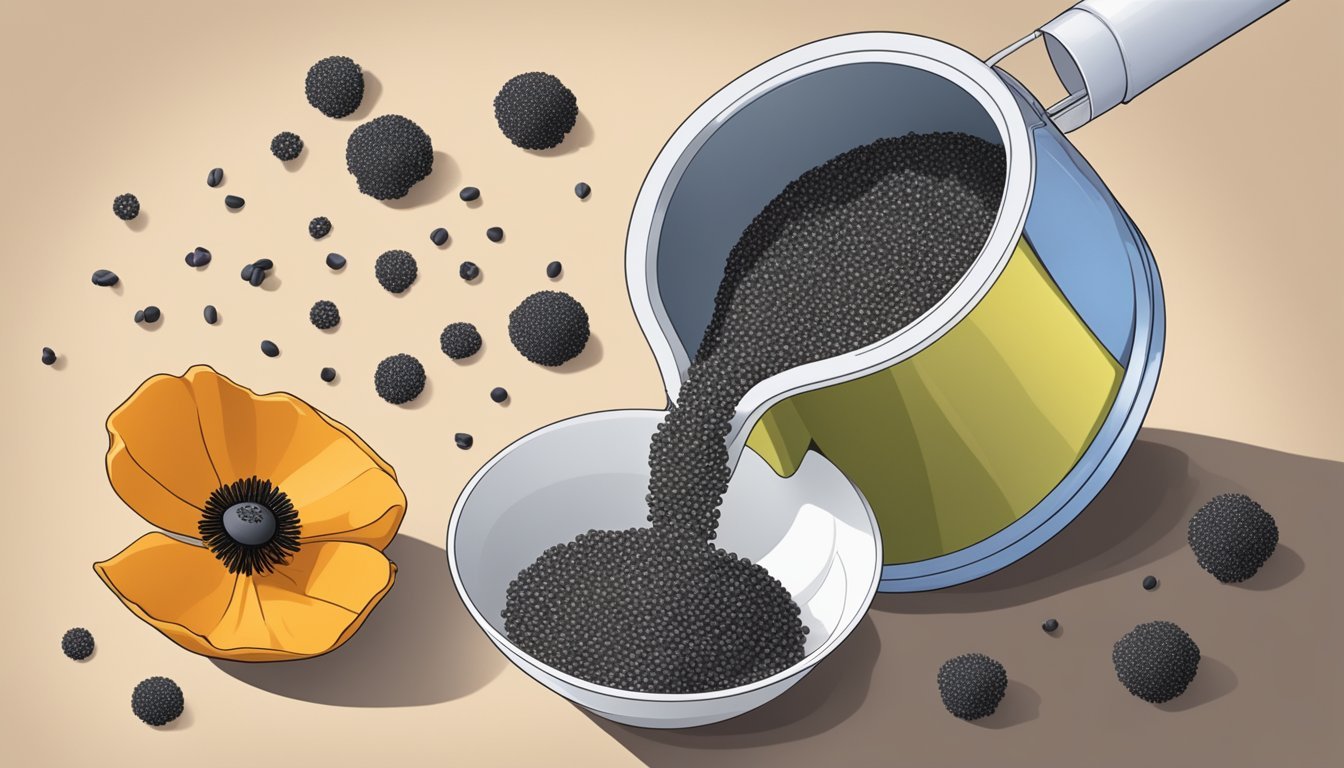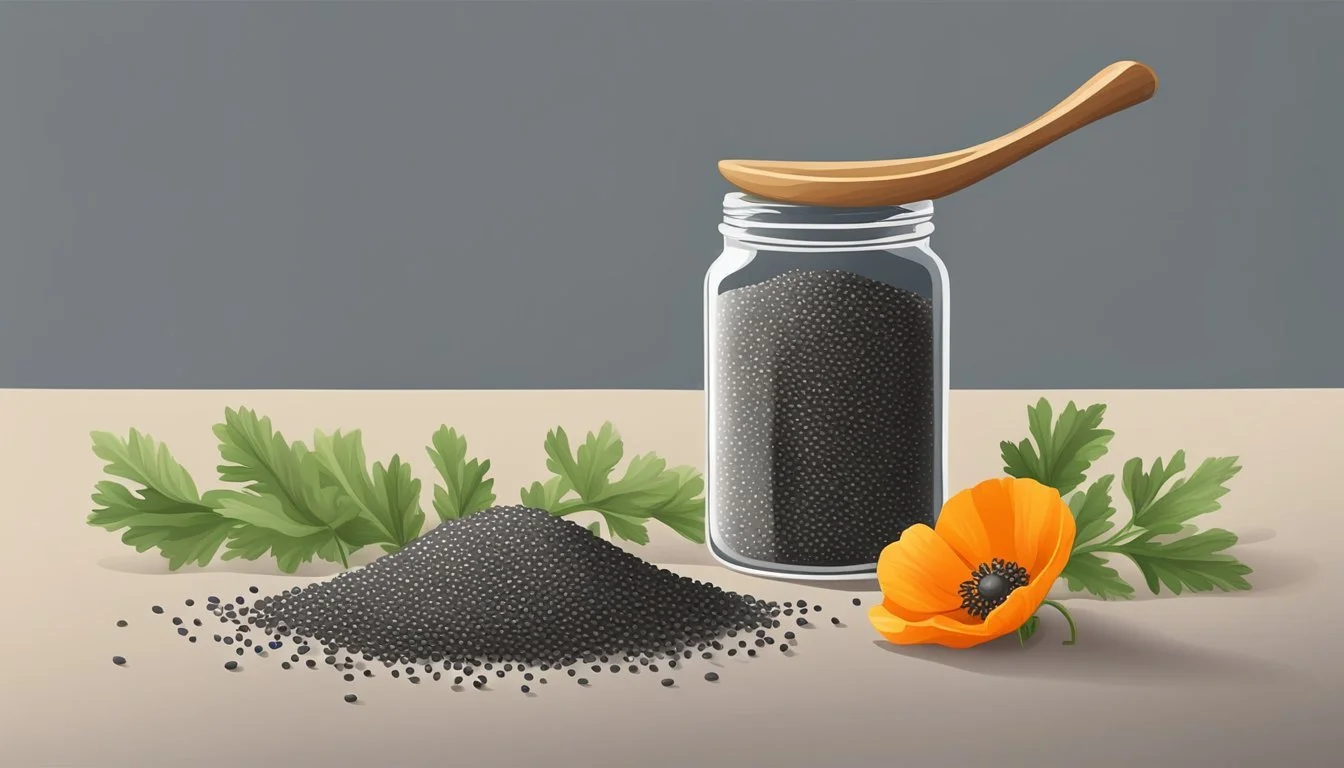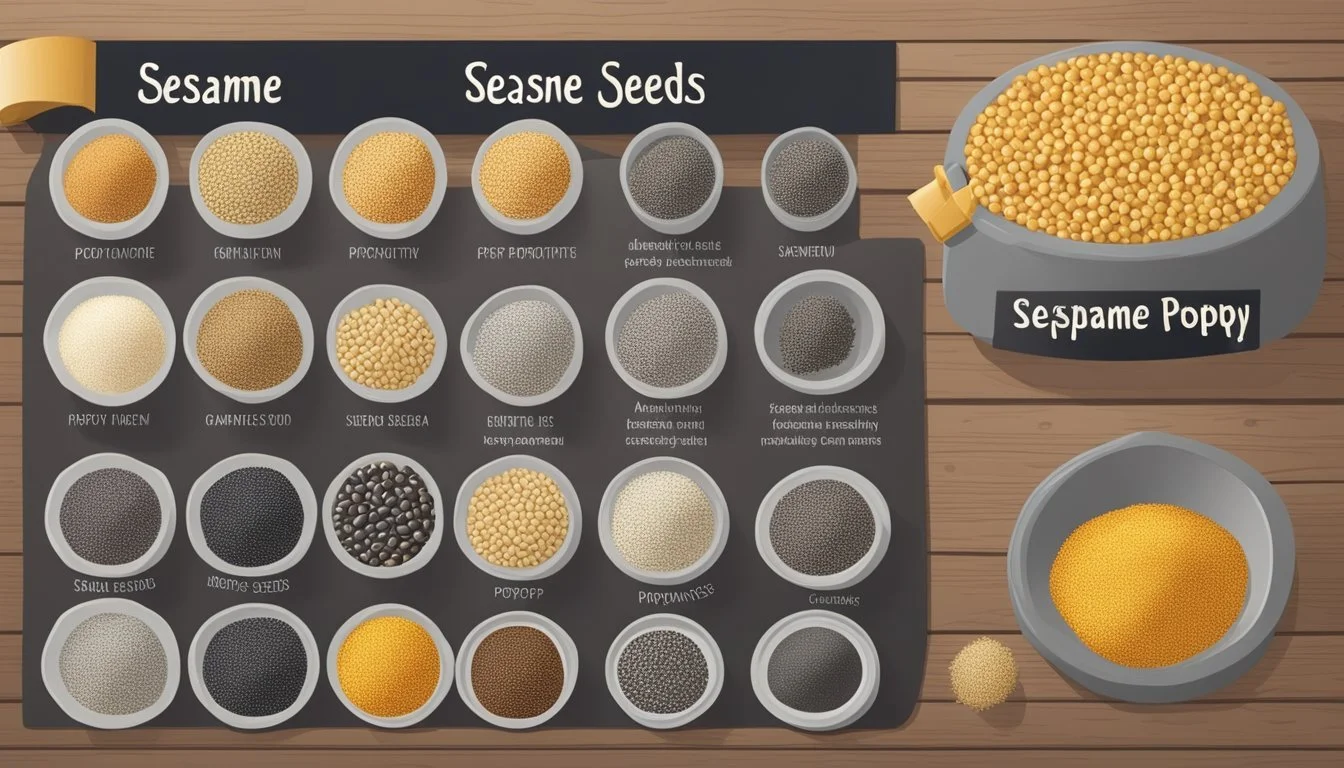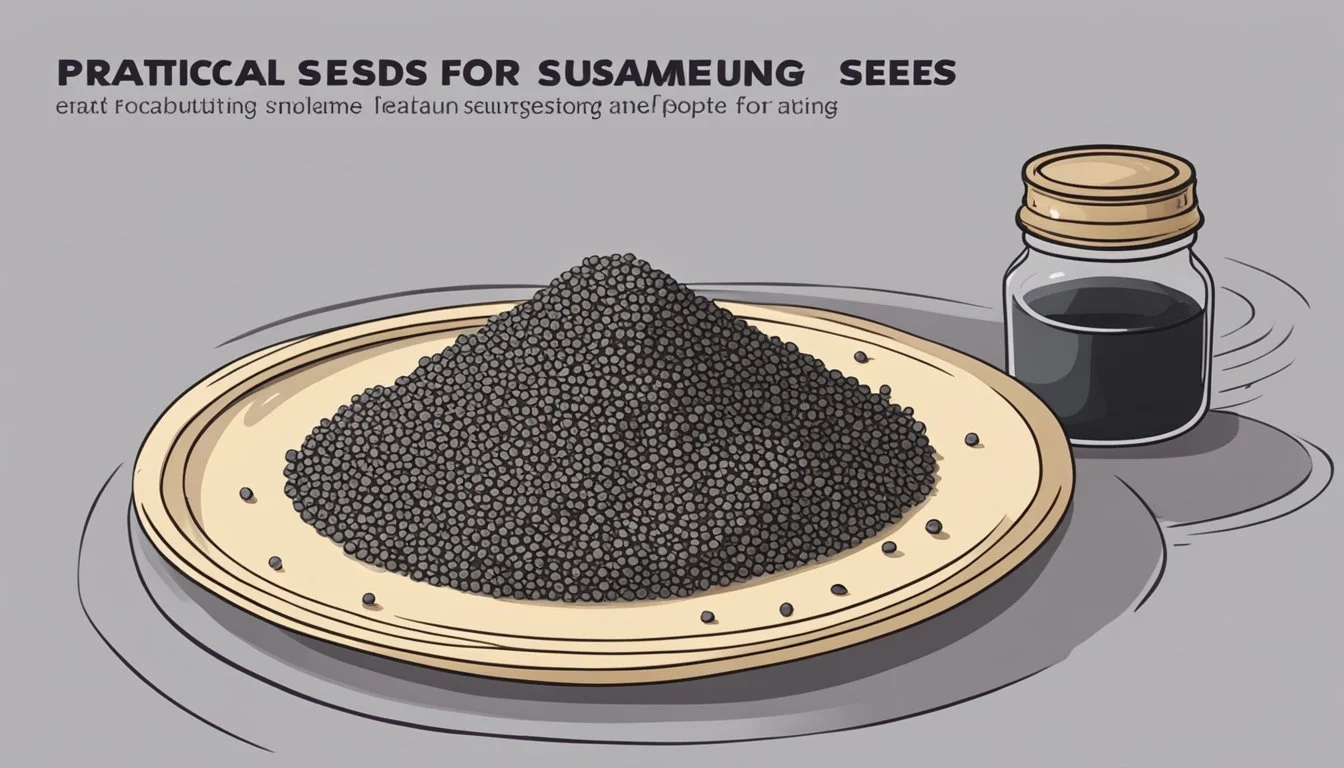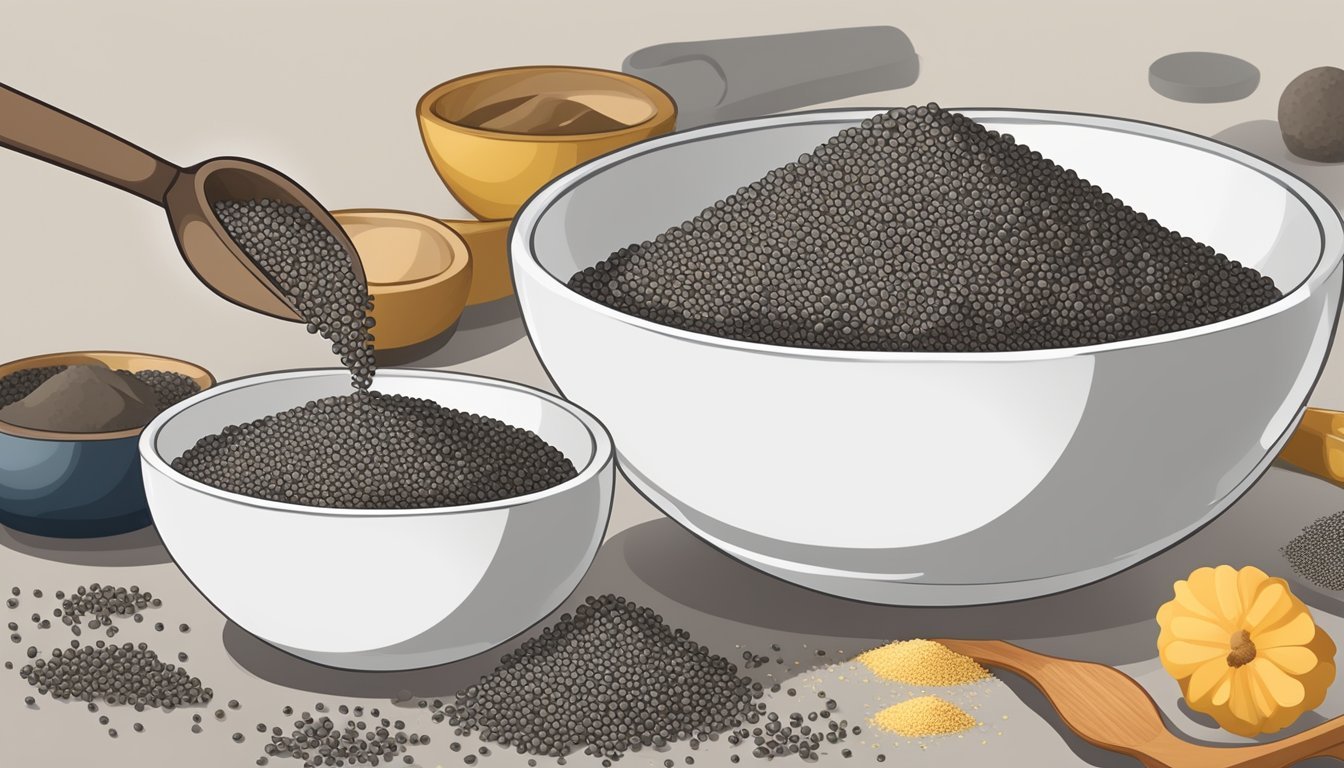How to Substitute Poppy Seeds for Sesame Seeds
A Simple Guide for Home Cooks
When it comes to cooking and baking, seeds are often the unsung heroes that bring texture and nuanced flavors to a dish. Sesame seeds, with their distinct nutty taste, play a vital role in numerous recipes ranging from bread and bagels to sushi rolls and salads. However, there are situations where sesame seeds aren't available or appropriate for a diner's dietary needs. In such cases, cooks can turn to poppy seeds as a substitute. Although both seeds differ slightly in taste and appearance, poppy seeds can mimic the texture and offer a unique flavor profile that complements a variety of dishes.
Poppy seeds are smaller than sesame seeds and come in a dark blue to black color, making them a visually striking alternative. Beyond visual appeal, they pack a punch in terms of nutritional value, containing essential minerals like calcium, magnesium, and iron. They have a mild, slightly sweet flavor that can enhance baked goods and dressings. While they may not completely mimic the taste of sesame seeds, their versatility makes them a useful alternative in many recipes.
Understanding how to use poppy seeds as a stand-in requires considering the textural differences and the moisture balance of the recipe. Poppy seeds are known for being less oily and can absorb liquid, potentially requiring slight adjustments to quantities or additional liquid ingredients. In savory or sweet dishes calling for sesame seeds, replacing them with poppy seeds can produce a delightful and satisfying result, proving that even the tiniest ingredients can have a significant impact on the dining experience.
Understanding Seed Substitution
When substituting seeds in recipes, it is crucial to consider their nutritional profiles, flavor, and texture, as they can influence both the health benefits of a dish and its sensory attributes.
Nutrition and Health Benefits
Seeds are generally rich in nutrients, contributing various health benefits when included in a diet. Poppy seeds offer a robust nutritional profile: they are an excellent source of fiber and contain beneficial minerals like magnesium, calcium, iron, and copper. Their omega-3 fatty acids can support cardiovascular health by helping to manage cholesterol levels. Conversely, sesame seeds are also a nutrient powerhouse, providing similar minerals along with a higher protein content. Both seeds are fiber-rich and can be a nutritious element in any cooking endeavor.
Flavor Profiles and Texture
The flavor and texture of seeds are paramount considerations in cooking as they can markedly affect the quality of a dish. Poppy seeds are known for their nutty and somewhat sweet flavor, while sesame seeds tend to have a more pronounced nuttiness with a hint of umami. Texturally, poppy seeds are tiny and contribute a delicate crunch to dishes. Sesame seeds, in contrast, offer a slightly more prominent crunch and can add a nuttier flavor and milder aroma to savory dishes. When aiming for a similar texture and flavor, one might choose poppy seeds to maintain that characteristic crunch and nutty essence, especially in recipes where a subtle sweetness or a finer texture is desired.
Poppy Seed Characteristics
Poppy seeds, derived from the opium poppy plant, are kidney-shaped seeds with a distinctive appearance and culinary profile. These tiny seeds are known for their slate-blue to black color and a crunchy texture that they impart to dishes, prominently seen in baked goods like muffins and lemon poppy seed cake.
Flavor Profile: Poppy seeds have a mild, nutty flavor. This subtle earthiness often complements the zesty tang in lemon poppy seed cake, adding a depth of flavor.
Texture in Baking: In baking, poppy seeds contribute to the texture of the final product. They are valued for their ability to add a pleasant, slight crunch, which is particularly noticeable in the soft crumb of muffins or the spongy layers of cakes.
Moisture Considerations: Even though poppy seeds contain oil, primarily linolenic acid, they do not significantly change the moisture content of baked goods due to their small size and proportion used in recipes.
Here's a brief overview of poppy seed attributes in tabular form:
Attribute Description Source Opium poppy plant Shape Kidney-shaped Color Slate-blue to black Flavor Mild, nutty Culinary Use Texture enhancer in baked goods Moisture Impact Minimal impact on moisture content of baked products Nutritional Aspect Contains linolenic acid
Poppy seeds are a versatile baking ingredient, best known for their role in traditional and modern pastries while also providing nutritional benefits.
Sesame Seed Varieties
Sesame seeds, known for their ability to enhance flavor and texture, come in various types with distinct characteristics suited for different culinary applications.
Differences Between Black and White Sesame Seeds
Black Sesame Seeds often carry a stronger flavor than their white counterparts, offering a more pronounced nuttiness which is well-suited for savory dishes. These seeds feature a black hull and are commonly used in Asian cuisine, providing not only a rich taste but also a striking contrast in color when used as a garnish.
Flavor Profile: Stronger, earthier
Color and Texture: Deep black with a slightly more crunchy texture
Common Uses: Topping for sushi, enriching flavor of rice dishes, and in making sesame oil
White Sesame Seeds are the more familiar variety, usually found with their hulls removed, revealing an off-white color. They have a milder flavor and are versatile for both savory and sweet applications. The seeds can be toasted to enhance their nuttiness and are a staple in Middle Eastern cuisine where they are used to make tahini and to enrich dressings, breads, and baked goods.
Flavor Profile: Milder, with a subtle nutty essence
Color and Texture: Pale cream color, softer in texture compared to black sesame seeds
Common Uses: Ingredient in bagels, hamburger buns, and as a topping for various salads and dressings
Common Uses in Cuisine
Sesame seeds serve as more than just a simple topping; they contribute distinct flavors and textures that can transform a dish. Black sesame seeds are employed for their visual appeal and potent flavor, making them popular in salads, as a crunch element in rice bowls, and garnish on sushi.
White sesame seeds offer a delicate crunch and are a classic topping on bagels and hamburger buns. Their mild taste makes them perfect for incorporating into salads and dressings, where they add texture without overpowering other flavors. Furthermore, due to their oil-rich composition, both black and white sesame seeds are integral in creating sesame oil and tahini, essential ingredients in many Asian, Middle Eastern, and Indian cuisine dishes.
Practical Tips for Substituting Sesame Seeds
When substituting poppy seeds for sesame seeds, one should consider the differences in volume, weight, and flavor profile to ensure the cooking outcome is pleasant and as intended.
Proportions and Measurement
For a successful substitution, one must be accurate with proportions and measurements. In general, poppy seeds can be substituted for sesame seeds in a 1:1 ratio by volume. However, due to the slight difference in weight - with poppy seeds being heavier - adjustments should be made if the recipe calls for weight measurement. A tablespoon of sesame seeds typically weighs about 9 grams, while the same volume of poppy seeds weighs around 10 grams. Always use a kitchen scale for precision if the recipe is weight-based.
1 tsp sesame seeds = 1 tsp poppy seeds
1 tbsp sesame seeds = 1 tbsp poppy seeds
1/4 cup sesame seeds = 1/4 cup poppy seeds
Toasting and Preparing Seeds
To match the crunch and enhance the flavor profile, the seeds can be toasted. Place the poppy seeds in a dry skillet over medium heat, stirring frequently until they darken slightly and become aromatic. This process takes approximately 1 to 2 minutes. One should not exceed this time as seeds can burn easily due to their high oil content. If a recipe calls for toasted sesame seeds, toasting poppy seeds before use can help achieve a similar crunch and enhance their subtle flavor, although they will not impart the same distinct aroma as sesame seeds.
Alternative Seed Substitutes
When looking to substitute sesame seeds, a variety of seeds and nuts can serve as adequate replacements, offering diverse textures and flavors to dishes whether they are vegan, condiment, garnish, or decoration, as well as imparting nutritional benefits.
Using Flax, Hemp, and Chia Seeds
Flax seeds are a popular choice for those seeking a sesame seed substitute, due to their similar, slightly nutty flavor profile. They are particularly rich in fiber and omega-3 fatty acids. When adding to sweet or savory dishes, flax seeds can be used whole for a crunchy texture or ground to blend seamlessly.
Hemp seeds are another beneficial alternative. A gluten-free option, hemp seeds bring a subtle, nutty taste and creamy texture to recipes. They are a potent source of protein and can be sprinkled on dishes as a garnish or used in baking.
Chia seeds tend to be milder in flavor but are a powerhouse of nutrients and fiber. While they may not mimic the taste of sesame seeds directly, their gelatinous texture when soaked can add a unique element to dishes. Chia seeds work well as a decoration or condiment and can be used in both sweet and savory dishes.
Incorporating Nuts and Other Seeds
Pumpkin seeds and sunflower seeds, when toasted, offer a rich, nutty flavor that can effectively replace sesame seeds as a garnish or decoration. Their larger size and distinct shape add a visually appealing and textural contrast to recipes.
Nuts such as pine nuts, pistachios, and chopped varieties like almonds or walnuts, provide crunch and flavor complexity. These can be especially fitting in dishes where sesame seeds serve as a subtle, crunchy element.
Mustard and basil seeds, although less common, can stand in as sesame substitutes in specific dishes. Mustard seeds add a pungent, spicy note, suitable for savory dishes, while basil seeds offer a mild, floral taste and can be especially appropriate in Asian cuisines.
Seed/Nut Texture Flavor Use-case Nutritional Value Flax Seeds Crunchy Nutty Garnish High in fiber, omega-3 Hemp Seeds Creamy Mildly nutty Baking High in protein Chia Seeds Gelatinous Mild Condiment High in fiber Pumpkin Seeds Crunchy Nutty Garnish - Nuts (e.g., pine) Varies Rich, nutty Decoration -
Avoiding Common Substitution Mistakes
When substituting sesame seeds for poppy seeds, it’s crucial for cooks to consider the impact on flavor, texture, aroma, and quality of the finished dish. Although sesame seeds can effectively replace poppy seeds, they must be prepared correctly to achieve the desired results.
Flavor: Sesame seeds possess a nuttier flavor compared to the slightly sweet and nutty poppy seeds. Toasting sesame seeds enhances their nut-like quality, making them a closer match to poppy seeds' taste.
Heat a dry pan on medium.
Add sesame seeds and stir constantly until golden.
Remove from heat to prevent burning.
Texture: Sesame seeds are larger and may create a different mouthfeel in delicate baking goods or dressings. They should be used in proportion to maintain the integrity of the dish.
Proportional Use for Texture:
If topping bread, maintain a 1:1 ratio.
In dressings, use sparingly to avoid overwhelming texture.
Aroma: The aroma of toasted sesame seeds is more pronounced. Ensure this does not overshadow other intended flavors, particularly in baked items where subtlety might be preferred.
Quality: Always use fresh sesame seeds for the best taste and avoid stale seeds that can impart a bitter flavor.
Freshness Test:
Smell: Fresh seeds have a pleasant, nutty scent.
Look: They should be uniform in color, without signs of moisture.
When cooking or preparing dressings, be mindful of the oil content in sesame seeds, as they may release more oil than poppy seeds when heated, potentially altering the texture of the dish. Adjust recipes accordingly to maintain the balance of wet and dry ingredients.
Health Considerations and Allergies
When considering substituting poppy seeds for sesame seeds, individuals should be mindful of both the health benefits and potential allergens associated with these seeds.
Poppy Seeds: They are known for their content of essential minerals such as magnesium, zinc, iron, and calcium. These minerals are significant for bone health and help in regulating body functions. Poppy seeds are also gluten-free, making them a suitable option for those with celiac disease or gluten sensitivities.
Sesame Seeds: Similar to poppy seeds, they offer a rich supply of nutrients including vitamins like Vitamin B and minerals such as copper, manganese, calcium, and magnesium. The seeds are valued for their potential to support cardiovascular health due to their phytosterols that may help in managing cholesterol levels.
Both seeds can be part of a healthful diet, but it is essential for consumers to be aware of allergens. Sesame seeds are one of the more common allergens and can trigger reactions in sensitive individuals. Those with known allergies to sesame should avoid its use and may opt for poppy seeds instead, provided they are not allergic to them.
It is always recommended to consult with a healthcare provider before making dietary changes, particularly for those with food allergies or underlying health conditions that may be affected by the intake of specific foods. Consumers should ensure they are using these seeds in moderation as part of a balanced diet.
Creative Uses in Recipes
When considering alternative ways of utilizing sesame seeds as a stand-in for poppy seeds, it's essential to factor in both the textural crunch and the subtle flavor variances they contribute. These adaptations allow for an inventive exploration of traditional and novel recipes.
Desserts and Baked Goods Innovations
In the realm of sweet treats, sesame seeds can be a surprising yet fitting companion for various desserts. Their nutty taste complements the sugar and adds a dimension of flavor to baked goods. Muffins that would typically feature poppy seeds can be speckled with toasted sesame seeds, not only as a visually pleasing garnish but also for enhanced taste. A classic lemon poppy seed cake can adopt these tiny seeds, with sesame's distinctive flavor marrying well with the tartness of lemon and the sweetness of sugar.
For recipes requiring a sprinkle of sophistication, a simple garnish of black sesame seeds can turn a humble cookie into a catalyst of culinary curiosity. This garnish provides not just an appealing contrast in color but also subtly introduces a depth of flavor to the sweetness.
Savory and Umami Flavor Enhancement
In savory dishes, sesame seeds elevate the essence of umami—the so-called fifth taste, characterized by a deep and complex flavor profile. By incorporating sesame into eastern cuisine, specifically in a hummus topping or as an inclusion in dressings, cooks can induce a nutty, creamy accent that harmonizes with the intrinsic qualities of these dishes.
A table showcasing inspirational applications of sesame seeds in savory cooking:
Application Dish Purpose of Sesame Seeds Garnish Hummus Add texture and nuttiness Ingredient Dressings Enhance flavor with toasty notes Topping Savory muffins Increase crunch and visual appeal
They not only act as a flavor enhancer but also contribute to the dish's texture and appearance. Chefs might find that toasted sesame seeds, due to their latent oil content, provide a subtle sheen and richness that is particularly desirable in dishes where a contrast of textures and flavors is sought after.

